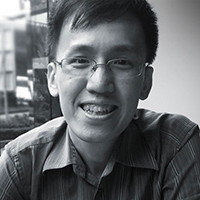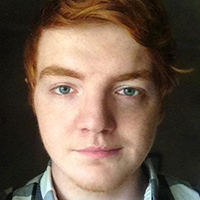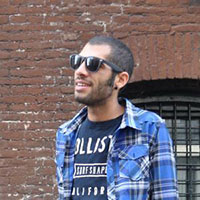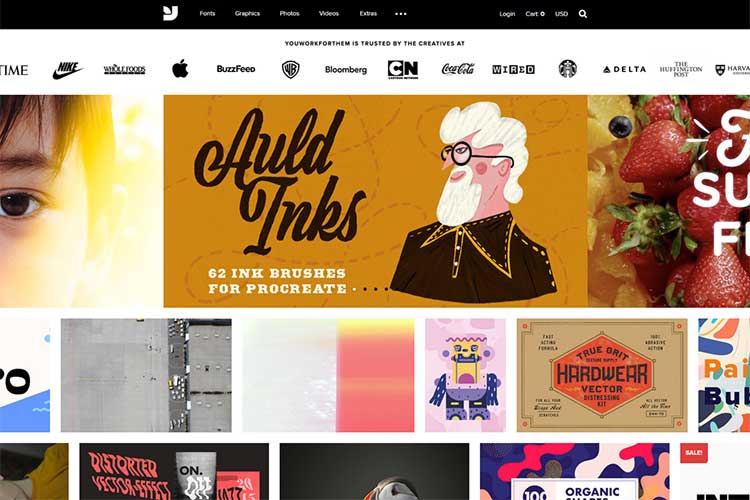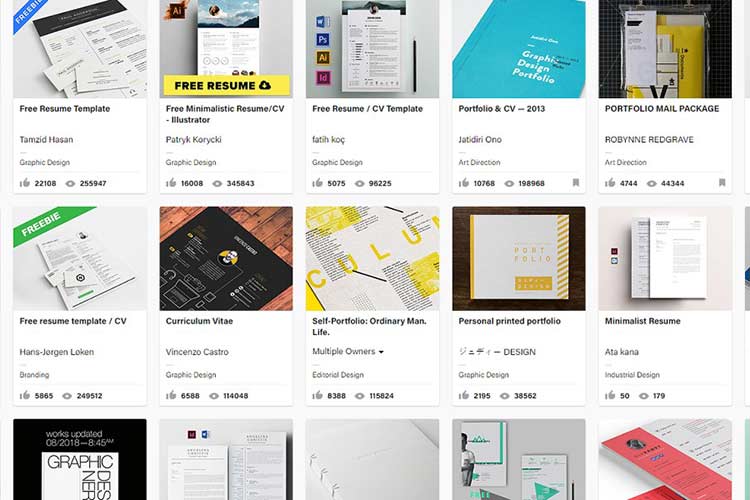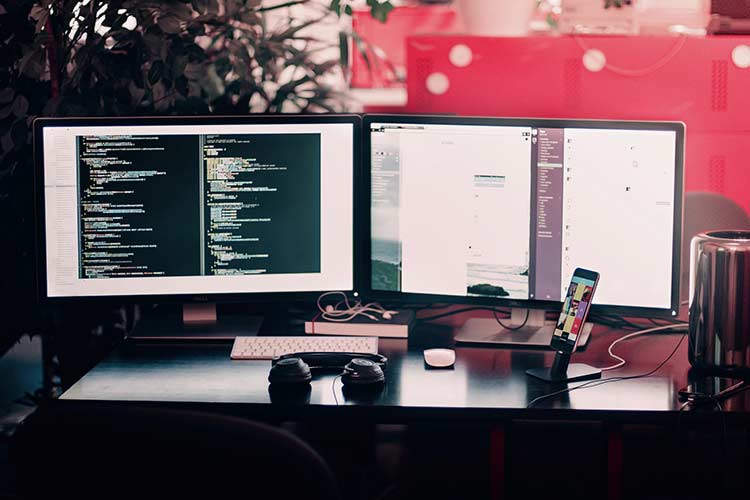In the past, there was a clear distinction between a web designer and a web developer. While it is true that there were people who could both design and develop, the number was tiny.
However, times have changed. These days, more and more web designers are equipped with the knowledge and responsibility of a web developer, working both on the design and development.
Needless to say, now seems to be the perfect time to branch in the industry by equipping yourself with more knowledge and resourcefulness. However you view it, whether you think it’s a blessing or a curse, a web designer is not only expected to work on a design; they need to be equipped with the knowledge and skills to develop code or even take on the responsibility of the entire development process, too.
Your Web Designer Toolbox
Unlimited Downloads: 500,000+ Web Templates, Icon Sets, Themes & Design Assets
Starting at only $16.50/month!
So, What Does It Mean to be a Full Stack Designer?
Well, being a full-stack designer simply means being a person who is cross-disciplinary and has the ability to complete a project. A full stack developer handles everything, including end development, back-end development, back-end server development, and much more. This is, of course, apart from coming up with an engaging design.
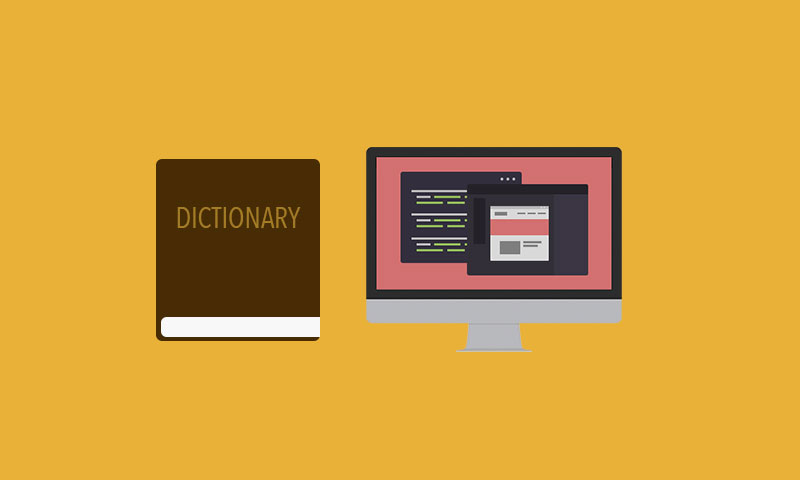
A full-stack designer is cross-disciplinary and able to complete a project
What the Experts Say about being Full-Stack
However, designing and coding are two distinct skills that require different regions of the brain to master. The right brain is for visual and creativity and the left brain is for structure and organization. Designers are predominately right-brainers while coder left-brainers. So there is still only a handful of full-stack web developer on the market.
I would never discourage anyone from learning to code. Even a few hours invested in learning the basics will earn you perspective and useful skills. That said, there’s a lot of intangible learning and judgement that an experienced developer brings to their work. That’s why it’s a good idea to balance an understanding of coding with a general perspective on what your project’s looking to accomplish, framed in a way that lends itself to constructive interdisciplinary discussions.
Becoming a full-stack designer helps everyone involved in the product, even if only a small subset of your skills are being utilized. Being full-stack means that you have the ability to comprehend every part of the product development process, allowing you to deliver design that not only improves the product, but improves the efficiency of your team as well. Not only can your work be more efficient, as a full-stack designer you are a multi-discipline polyglot who can speak the native language of every member of the team.Corey Lee
Becoming a full-stack anything is special in and of itself. It’s investing quite a lot of time and effort into oneself professionally, most often outside the workplace. So what makes full-stack designers so important? Primarily, it’s the skills in their spectrum. Typically, designers are the ones organizing research, creating wireframes, checking out UX patterns, organizing UI design, and generally making sure we aren’t ending up with stunningly beautiful websites and apps that simply don’t have a purpose.
Working with developers in terms of the realization of the design has always been a big pain and non-stop iterations, but recently a beautiful thing has happened in the world of Web design — the term “Web Designer” is turning in favor of the term “Full Stack Designer”. It no longer conveys the meaning that the designer just delivers source files, but that the designer understands the world of the web on technical levels and fulfills the design to a working prototype by himself, and not just a few designers but many.
The Benefits of Being a Full Stack Designer
Expansive Skill Sets
Without question, more than the financial rewards, the biggest perk of being a full-stack designer is the opportunity to expand skills. More often than not, they end up having a thorough knowledge of their job and become more consistent even from the research phase until the production phase.
A full stack designer can become aware of their limitations and expectations as they plan UX/UI wireframes. They become more knowledgeable regarding what works well and cannot work well in coming up with an elegant design. They can also become more realistic regarding what to expect even before they start pushing code or pixels.
Having said that, becoming a full stack designer does not only benefit the designer; even the employer can benefit from their comprehensive set of skills, too. It goes without saying that an employer can keep a lean structural workforce equipped with individuals who have a grasp of the bigger and more complete picture of the work that needs to be done.
Just imagine this. Even with a basic knowledge of development or another skill apart from web designing is already a perk. In fact, this can arouse the need of a web designer to increase their knowledge in the said area. A web designer can hunger for more knowledge about the things outside their comfort zone once the seed has been planted.
Realistic Expectations
Apart from increased knowledge and expanding their set of skills, another benefit of being a full-stack designer is that they know exactly what to expect of the design that they have come up with. Gone are the days when a web designer just sits back in front of their computer and buries their head in a sketchbook, not worrying about how the design will be implemented. These days, it’s an entirely different type of game for web designers.
More than coming up with a visually appealing design, a full stack web designer is expected to transcend this scope and use their influence over other areas to enhance the design of a project. It’s like expecting an architect to come up with design and take into consideration of the materials and physics involved in the design that they have worked on. Hence, full stack designers can easily come up with a design that is not only aesthetically appealing but functional, too. The demand for designers to work more than just a design is on the constant rise.
After all, a good designer does not only focus on the design itself but also on other things that are connected to it. Sounds counterproductive, one may think. Well, not really. A designer needs to realize the influence of the different factors in web development has on the design. The more they comprehend the whole process, the better their design can become. Every full stack designer is aware of this.#
The Pitfalls of Hiring a Full Stack Designer
Thanks to the expansive skill sets of a full stack designer, an employer is forced to give them a much higher pay as compared to those who just focus on web design alone. Well, this is just proper, after all, a full stack designer can do a job that is normally done by two people.
Additionally, a full stack designer has to constantly advance themselves through learning. They need to understand and know the latest technologies, skills, and practices. While it is true that this is great, this can also mean investing more time and money, much more if they have no idea of what skills exactly they need to learn.
The Skills a Full Stack Designer Should Have
Foundation Skills:
- Design thinking: This is the first skill that a full stack designer needs to learn. They need to identify their audience so that they can focus their efforts on a more actionable and testable view of their clients. They need to create a healthy interdisciplinary tool set that they can use needed in product development and promotion.
- Lean: A full stack designer should know if something is going to work even before time and money are wasted on it. They must be adventurous enough to venture into what they don’t know without losing their focus on the things that they already know as right. They should be able to learn fast to avoid wasting time.
- Customer discovery: Being able to create an actionable understanding of their customer so that they can build the right product and market it effectively is another skill that a full stack designer needs to have. They should know what ticks their customer, instead of ticking him off.
- Agile: A full stack designer should always be in the know the progress of the objective that they and their team has. They need to create inputs to product development and promotion that are linked to their work involved in design thinking and customer discovery.
Technical Skills
- Model-View-Controller: This will help a full stack designer to identify the development program, its importance in all aspects, and its suitability for everything else. It will also help him break down the complexity of software development and think about the questions that can give sensible answers.
- App and platform integration: This will enable a full stack designer to know what they are working on and its suitability in its operating environment. It will also help him understand the different pieces of their extended product and the implications of the various approaches to making an application.
- Roles and systems in a technical team: Knowing the difference between a UI designer VS developer VS sysadmin VS developments can give full stack designer a clearer understanding of their role and put him on the right track as they work on their project.
Full Stack Designer Job Boards
- Stack Overflow Careers 2.0: This is, without question, a quality site that features an explicit filter for telecommuting jobs. What is further impressive is that this site features a job posting form for employers that can be checked if the employer wants an entirely telecommute employee.
- 37signals Job Board: This job site has posts that are of high quality. However, it seems that this job doesn’t list a lot of telecommuting jobs. Additionally, this job site does not clearly define if a job is for telecommuting.
- Dribbble – Jobs: This job site features offers some telecommuting jobs, too, but an applicant needs to exercise a lot of patience in order to find one. The truth of the matter is that this job site is simply a launchpad to external sites.
- Authentic Jobs: This site is reputed for the quality of its job listing posts The other perk here is filtering that lets you separate full-time jobs though the telecommute checkbox.
The Tools of the Trade
Lauren Waller opines that the kinds of tools that a full stack designer uses are highly dependent on their preference. For instance, despite the rising popularity of Sketch, if a web designer is more familiar with Photoshop, encourages them to stay with it, much more if they have mastered using it.
Nonetheless, the following are the things that he suggests are the most valuable tools to a full stack designer:
- Pen and Paper: Before using his computer, using a pen and paper to sketch or write something about a design. While it is true that some designers find this unnecessary, it works well with other people.
- Paper App for iPad: For full stack designers who are not sold to the idea of using pen and paper, the Paper App for iPad is the best substitute for making basic ideas and wireframe sketches.
- Moqups: This tool is primarily for wireframing. Moqups offers a lot of web components that can be dragged into the canvas or be edited with a great deal of ease.
- Sketch: According to Lauren Waller, he loves Sketch because of its:
- Artboards that give him infinite workspace
- Intuitive, one letter shortcuts
- Community, where anyone can contribute to the betterment of the project
- Customisable grid layout
- Ease in exporting assets
- Symbols and shared styles
- CSS attributes
- Adobe Photoshop and Illustrator: This is great for illustration and photo manipulation. Photoshop is ideal for editing, comps, deep etching, and grading. Illustrator works best for customizing iconography, typography, and illustrations.
- IconJar: This is the easiest way to incorporate icons into a design, much more if you use common icon libraries.
- IcoMoon: Without question, this is the easiest way to make a custom icon font, especially is a project calls for uncommon iconography.
- InVison: InVision enables you to make an interactive design with ease and speedily with the help of Hotspots.
- Kraken: This is best for image optimization. It reduces the large file sizes without affecting their quality.
- Webstorm: This has numerous integrated features which make a seamless development process possible. This tool can be used from cloning projects to writing codes to pushing to GitHub.
Is Being a Full Stack Designer Financially Rewarding?
Surely, full stack designers are some of the most stressed-out workers out there. However, thanks to their expansive set skills and the demand for them, they are some of the most financially rewarded individuals. Depending on the size of the company that they are working for and its location, a full stack designer can earn as much as $160,000 annually. In San Francisco, California USA, the average annual income of a full stack designer is $139,000.
A full stack designer doesn’t have to assume every role every time a product is created. After all, a full stack designer cannot be a jack-of-all-trades and master of none. Going full stack is being equipped with the expertise in some fields while having a traversable skill level in all the other fields. Full stack designers are not an expert in everything, but, without question, they have the skillset to deliver a well-designed finished product.
This post may contain affiliate links. See our disclosure about affiliate links here.

